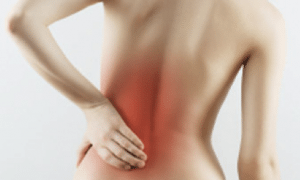Low back pain is probably the most common musculoskeletal complaint amongst the UK population, and is recognised as the single greatest cause of pain related disability worldwide. More and more research is confirming the risks associated with long term use of medication for low back pain, while at the same time questions are being raised about the effectiveness of medication in the first instance. This week, lets examine some recent research.
Just how big a problem is low back pain anyway?
We all know that low back pain is, well, a pain in the back! – but recent research is now shedding light on just how serious the issue is. The latest stats show that Low back pain causes more disability worldwide than any other health condition.[1] As a chiropractor, we are always saddened by how man people struggle alone with low back pain – but even given this attitude low back pain is the second most frequent symptom to prompt attendance in general practice after the common cold.[2]
As if back pain itself wasn’t enough of an issue, research shows that the most common remedy – medication, mainly painkillers – have only a limited effect.[3] Perhaps worst of all, many patients with persisting symptoms also continue to take medicines long-term despite the low likelihood of ongoing benefits.
Does medication even work?
There are certainly some circumstances where medication can assist in the management of back pain – acute pain brought on by an injury, for example, can often benefit from the use of painkillers in the short term, until specialist care can be sought. Long term use of painkillers, however, may be far less effective than we might assume.
Lets look at a few examples. Firstly, Paracetamol was once the preferred medicine for non-specific low back pain based on the view that it was cheap, safe and effective. While paracetamol might be cheap (and safe in the short term) It wasn’t effective. Aa systematic review including three randomised controlled trials concluded there was high-quality evidence that paracetamol was no more effective than placebo for acute non-specific low back pain.[4]
A second common option are Non-steroidal anti-inflammatory drugs, or NSAIDs. Unlike paracetamol, evidence shows that NSAIDs can have a positive effect – A systematic review including 35 randomised trials found moderate- quality to high-quality evidence that NSAIDs reduce acute non-specific low back pain by about 6 points, and chronic non-specific low back pain by about 11 points, on a 100-point scale. [5]
The problem is that 11 points is not very much – so that overall the study showed that the effects are too small to be considered worthwhile by the typical patient. NAID usage must also be balanced against the risk of long term consumption – some studies have shown evidence that NSAIDs may slight increase the risk of heart problems, and it is well known that they carry well-known gastrointestinal and renal risks.
Another, stronger option are opioids, which are also commonly prescribed for non-specific low back pain. In 2014, nearly half of the prescriptions that Australian general practitioners provided for non-specific low back pain were for opioid or opioid combinations.4 Approximately 3%–4% of the US population receive long-term opioid therapy.13 Despite this, there have been no randomised placebo-controlled which have properly investigated opioids for acute non-specific low back pain – one of the biggest problems in this regard has been the fact that more than half of patients cannot tolerate opioids and remain well enough to stay in a trial – let aloe rely on them as a long term solution.[6]
A better way to treat low back pain!
A recent article in the British Journal of Sports Medicine[7] examined the above information and made some interesting suggestions about how we might move forward. After all its not just chiropractors and other spinal specialists who want to see change – governments and health bodies are also shifting their thinking. For example, The 2017 Danish Guidelines do not recommend
any medicine for low back pain[8]. The 2016 UK guideline from the National Institute for Health and Care Excellence only recommends non-steroidal anti-inflammatory drugs (NSAIDs) and ‘weak’ opioids,[9] and the 2017 US guideline from the American College of Physicians (ACP) makes a similar recommendations[10].
The 2018 article suggests that clinicians should avoid prescribing medicine wherever possible and should instead advise patients to try a non-medication-based therapy if at all possible. Where medication is used, only the lowest effective dose should be used, and tapering plans should be created with a view to avoiding long term use.
Chiropractic care is just such an approach – and one which is totally natural and drug free. Chiropractic care is well known as safe and effective way to treat back pain, and (perhaps more importantly!) to prevent back pain reoccurring.
Numerous studies have shown the effectiveness of chiropractic care in reducing and preventing back pain – but to take just one example which compared chiropractic and drugs, a recent study published in the Annals of Internal Medicine showed that showed that chiropractic care had a statistically significant advantage over medication after 8, 1 2, 26 and 52 weeks when treating upper back and neck pain.[11]
[1] Vos T, Barber RM, Bell B, et al. Global, regional, and national incidence, prevalence, and years lived with disability for 301 acute and chronic diseases and injuries in 188 countries, 1990-2013: a systematic analysis for the Global Burden of Disease Study 2013. Lancet 2015;386:743–800.
[2] Deyo RA, Weinstein JN, pain LbackN Engl J Med 2001;344:363–70.
[3] Mathieson S, Valenti L, Maher CG, et al. Worsening trends in analgesics recommended for spinal pain in primary care. Eur Spine J 2017.
[4] Machado GC, Maher CG, Ferreira PH, et al. Efficacy and safety of paracetamol for spinal pain and osteoarthritis: systematic review and meta-analysis
[5] Abdel Shaheed C, Maher CG, Williams KA, et al. Efficacy, tolerability, and dose-dependent effects of opioid analgesics for low back pain: a systematic review and meta-analysis. JAMA Intern Med 2016;176:958–68.
[6] Abdel Shaheed C, Maher CG, Williams KA, et al. Efficacy, tolerability, and dose-dependent effects of opioid analgesics for low back pain: a systematic review and meta-analysis. JAMA Intern Med 2016;176:958–68.
[7] Traeger AC, Buchbinder R, Harris IA, et al. Br J Sports Med Epub ahead of print. doi:10.1136/bjsports-2017-098614
[8] Stochkendahl MJ, Kjaer P, Hartvigsen J, et al. National Clinical Guidelines for non-surgical treatment of patients with recent onset low back pain or lumbar radiculopathy. Eur Spine J 2018;27.
[9] National Institute for Health and Care Excellence (NICE): Clinical Guidelines. Low back pain and sciatica in over 16s: assessment and management 2016.
[10] Qaseem A, Wilt TJ, McLean RM, et al. Noninvasive Treatments for Acute, Subacute, and Chronic Low Back Pain: A Clinical Practice Guideline From the American College of
[11] Ann Intern Med 2012: 1-I O



